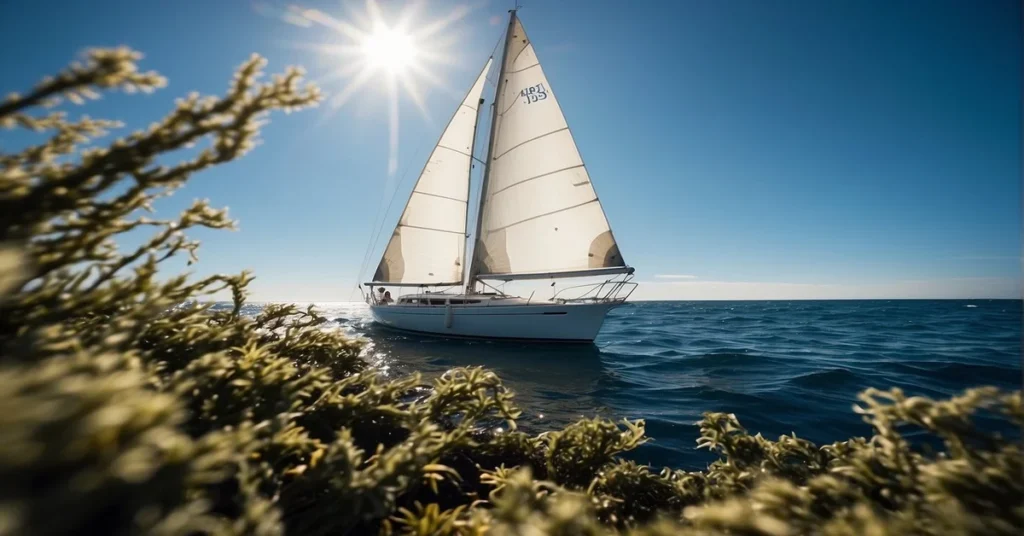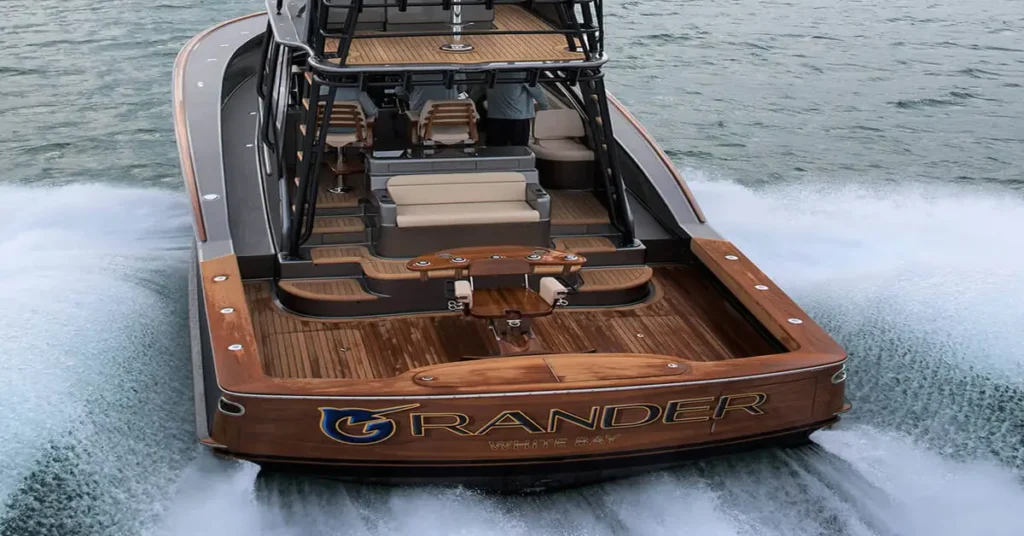Dive into the world of 3D Printed RC boats, an exciting niche that combines the thrill of model boating with the cutting-edge technology of 3D printing. You’ve found the perfect port if you’re looking to steer away from conventional kits and crave a tailor-made nautical experience. This page is your guide to constructing your remote-controlled vessel, offering the satisfaction of building something unique from scratch.
Whether you’re a seasoned sailor of the model world or a newcomer charting your course, 3D printing your RC boat presents a sea of opportunities to customize every detail, from hull to stern. You’ll witness your boat gliding across the waves and revel in the accomplishment of knowing it’s a product of your innovation and skill.
Embark on my journey that promises to enhance your understanding of design, buoyancy, and propulsion, all through the lens of 3D printing.
My Opinion on 3D Printed RC Boats
When I first heard about 3D printed RC boats, I was intrigued by the concept. It sounded like a fun intersection between technology and hobby. After doing a deep dive, here are some of my thoughts:
- Accessibility: The idea that anyone with access to a 3D printer can make their boat is pretty exciting. It opens the hobby to a broader audience and allows for less feasible customization.
- Creativity: There’s an undeniable creative aspect to this. Designing and building a boat from scratch is a rewarding process that combines engineering with a touch of artistry.
Here’s a rundown of what I’ve found to be the upside:
| Pros | Description |
| Customization | Tailor designs to personal preference |
| Innovation | New solutions to old problems |
| Cost | Potentially lower than traditional models |
However, it’s not all smooth sailing:
- Durability: Traditional RC boats are typically made from materials that can endure the rigors. I’m curious about how 3D printed materials hold up over time, especially since they may absorb moisture and potentially degrade.
- Technical Skill: The learning curve can be steep. Ensuring the boat is watertight and understanding the ins and outs of 3D Printing is only for some.
- Quality Control: As with any DIY project, the quality of the final product varies greatly depending on the printer’s quality and the user’s expertise.
The tech behind a 3D-printed RC boat is promising, and its growth is something to watch. It requires patience and skill, but it’s a great avenue to explore for those enthusiastic about DIY and customization.
Getting Started with 3D Printed RC Boats

Embarking on the journey of creating 3D printed RC boats is thrilling. I’m here to guide you through the fundamental steps to bring your aquatic dream to life, from choosing the appropriate equipment to understanding the nuances of 3D Printing.
Choosing the Right 3D Printer
Selecting the proper 3D printer is the first crucial step. Not all printers are suitable for 3D Printed RC boats. You’ll need a printer that can handle the size of the parts you plan to print and has good resolution to ensure detail in your designs. Reliability is critical, as you’ll print parts that must fit together precisely.
Selecting Materials for Durability and Performance
For my RC boat, I prefer using PLA for its ease of use and strength. However, depending on where you plan to sail, you might opt for ABS or PETG, which offer improved water resistance. When selecting materials, consider buoyancy, weight, and the capacity to withstand UV exposure.
Understanding 3D Printing Basics for RC Boats
Understanding the 3D printing process is essential. Attention to detail in the design phase can save you time and resources. Ensure your 3D printable models are watertight and optimized for Printing. Familiarize yourself with your printer’s settings to achieve the best build quality for individual components. Consider factors like layer height and infill patterns for structural integrity.
Designing Your RC Boat

When I first ventured into the world of remote control boats, designing 3D printed RC boats was as thrilling as sailing it. Navigating through the design process involves a blend of art, engineering, and a bit of patience.
Finding and Downloading 3D Models
I started my journey by searching for 3D models to download. One of the best resources I found was Thingiverse, which hosts a diverse array of over 1,919 printable 3D models for RC boats. Whether you’re looking for sleek racing designs or leisure sailboats, picking a model that looks good and is functionally sound is crucial. Icons indicating the popularity and user ratings helped me weed out less reliable designs.
Customizing Boat Designs for Better Performance
Once I had my basic model, customizing it for better performance was my next challenge. I delved into the files, tweaking aspects like the hull shape for better hydrodynamics and adding supports where the structure seemed weak. It’s important to remember that even minor alterations can significantly impact how well your boat cuts through water.
Ensuring Proper Sizing and Fit of Components
The final step was ensuring all components fit perfectly. Sizes like motor mount, battery compartment, and rudder assembly need precise measurements. I learned that accurate sizing is not just about the fit; it’s about maintaining the balance and integrity of the boat design. A well-balanced boat means a smoother sail and less chance of capsizing.
Assembling and Electronics Installation

When I start to work on 3d printed RC boats, ensuring that the motor and electronics are appropriately assembled is crucial for performance and control.
Mounting the Motor and Electronics
I found a great guide on assembling a 3D printed boat for my boat, which recommends specific hardware for securing the motor. I carefully align my brushless motor within the hull, check the fit, and use the recommended screws to secure it in place. I ensure all electronic components are mounted with proper cooling and air circulation.
Wiring for Optimal Power and Control
The key to responsive controls is proper wiring. I ensure that my power wires from the battery to the brushless motor are thick enough to handle the current, which minimizes heat and power loss. The ESC’s wiring is neatly organized to prevent interference and allow easy access for maintenance.
Setting Up the Receiver and Servo for 3D printed RC boats
Finally, I connect my receiver and servo, ensuring that my receiver is positioned away from high-voltage lines to reduce interference. I meticulously check that each connection from the receiver to the servos is secure, as they are responsible for my boat’s precise steering and throttle control.
Launching and Maintaining Your Boat

I’ve spent countless hours perfecting my 3D printed RC boat; now it’s time to get it into the water. The excitement of the maiden voyage is unmatched. Still, running through some final checks and maintaining regular maintenance is crucial to ensure everything goes smoothly.
Final Checks Before Your Maiden Voyage
Before I launch my boat, I always double-check a few key aspects:
- Hull Integrity: The hull should be watertight with no visible cracks or weaknesses.
- Control System: Ensure the remote control communicates effectively with the boat.
- Propulsion: Test the motor and steering to confirm they respond correctly.
A quick search engine lookup on your model might provide additional pre-launch checks specific to your 3D printed jet boat or RC boat.
Maintenance Tips for Longevity
After each run:
- Rinse the boat with fresh water, especially if it’s been in saltwater.
- Dry thoroughly to prevent water damage or corrosion.
Regularly:
- Inspect for and repair any damage to the hull or parts.
- Lubricate moving parts to avoid wear from friction.
For specific 3D printing maintenance advice, online forums and dedicated RC boating communities can be invaluable resources. Remember, maintaining your 3D printed RC boat extends its life and ensures consistently good performance.
FAQ – 3D Printed RC Boats

Exploring the world of 3D printed RC boats is an exciting journey. I’m here to guide you through some of the most common questions that arise when diving into this innovative hobby.
What Questions to Ask About 3D Printing?
Materials: What kind of filament is best for my RC boat project? Should I use ABS, PLA, or PETG?
Printer Specifications: Does my 3D printer have a large enough build volume for the parts of the RC boat? What resolution should I print at for optimal strength and detail?
Design: Are specific 3D models available for the RC boat I want to create? Does my chosen design require support or special printing considerations?
What are RC Boats Made of?
RC boats have traditionally been made from wood, plastic, and fiberglass. In terms of 3D printed RC boats, the common materials I would use are:
PLA (Polylactic Acid): It’s a biodegradable thermoplastic that’s easy to print, though not highly water-resistant, without special coatings.
ABS (Acrylonitrile Butadiene Styrene): Known for its toughness and higher temperature resistance, it’s a good choice for more durable parts but can be trickier to print with due to warping.
PETG (Polyethylene Terephthalate Glycol): This material combines ease of printing with strength and water resistance, making it an excellent option for RC boat components.
Is it Possible to 3D Print a Boat?
Absolutely! You can 3D print a fully functional RC boat. However, it’s crucial to consider factors like:
Waterproofing: Ensuring all parts are correctly sealed and possibly coated to prevent water ingress.
Assembly: Figuring out how the parts will fit together and whether I need additional hardware or adhesives.
Electronics Housing: Designing compartments for electronics that protect them from water.
My article gave a quick Dive into 3D Printed RC Boats and explained the advantages & Joys. Now it’s Your Turn – Share your 3D Printed RC Boats Experience or questions in the comments below.



